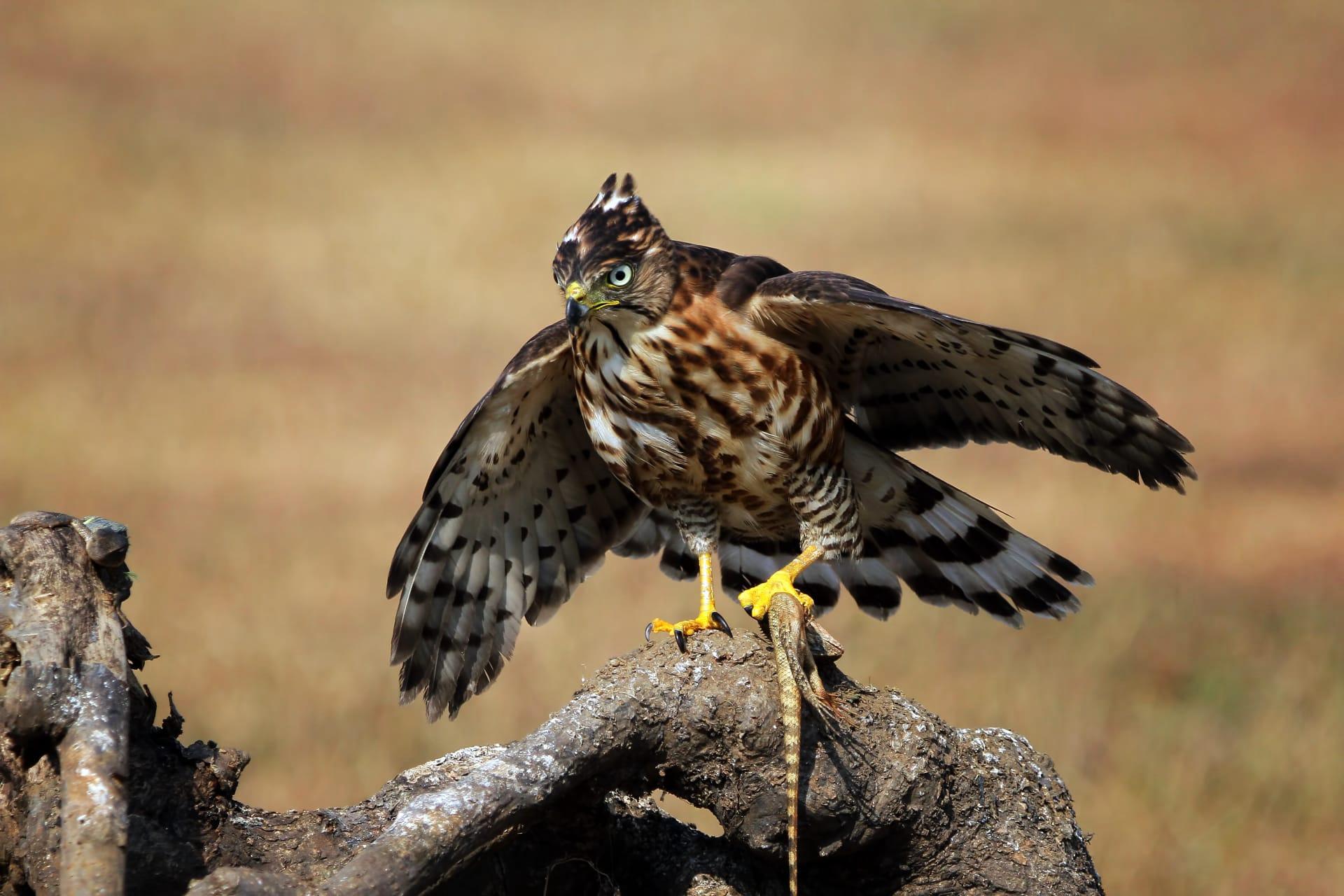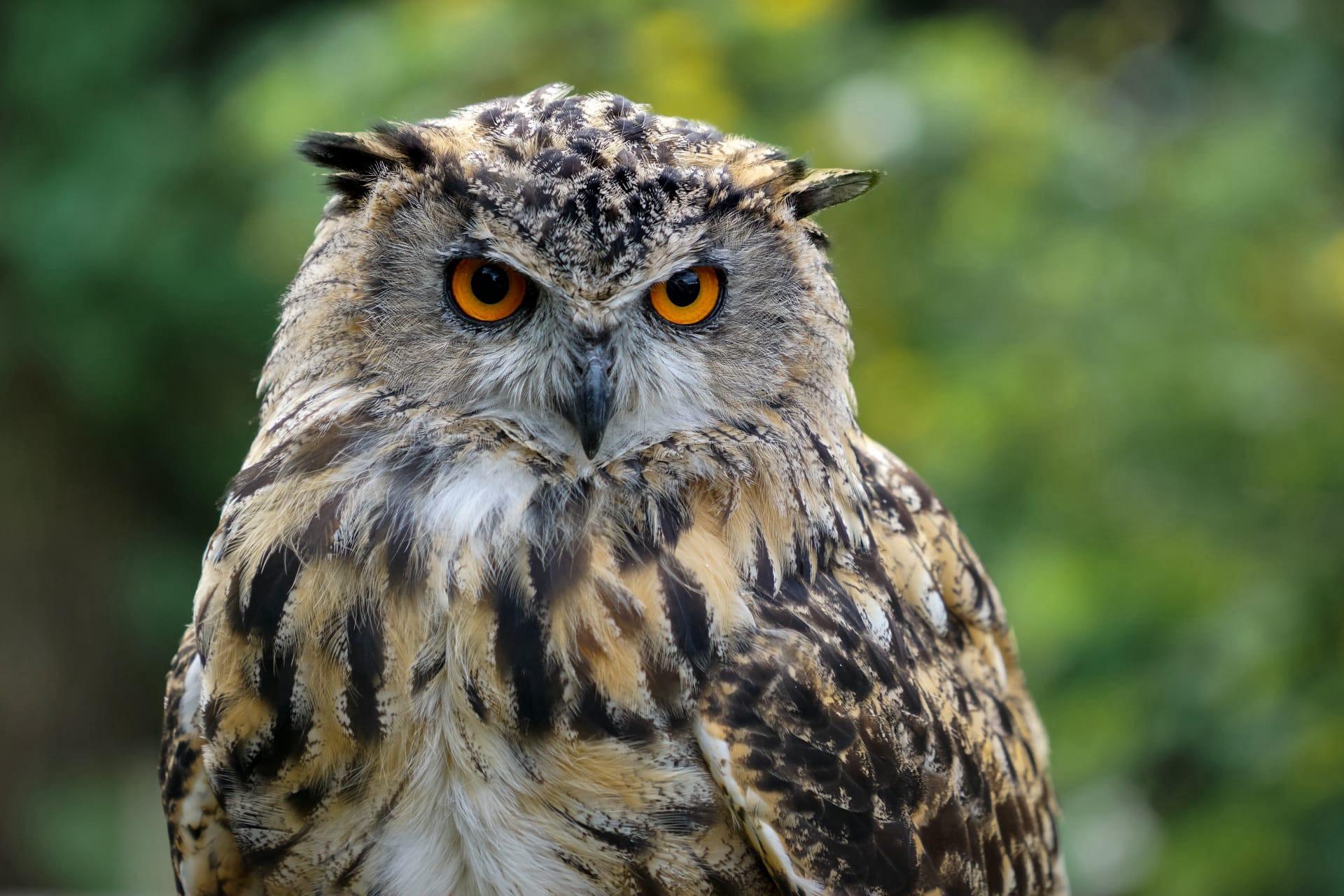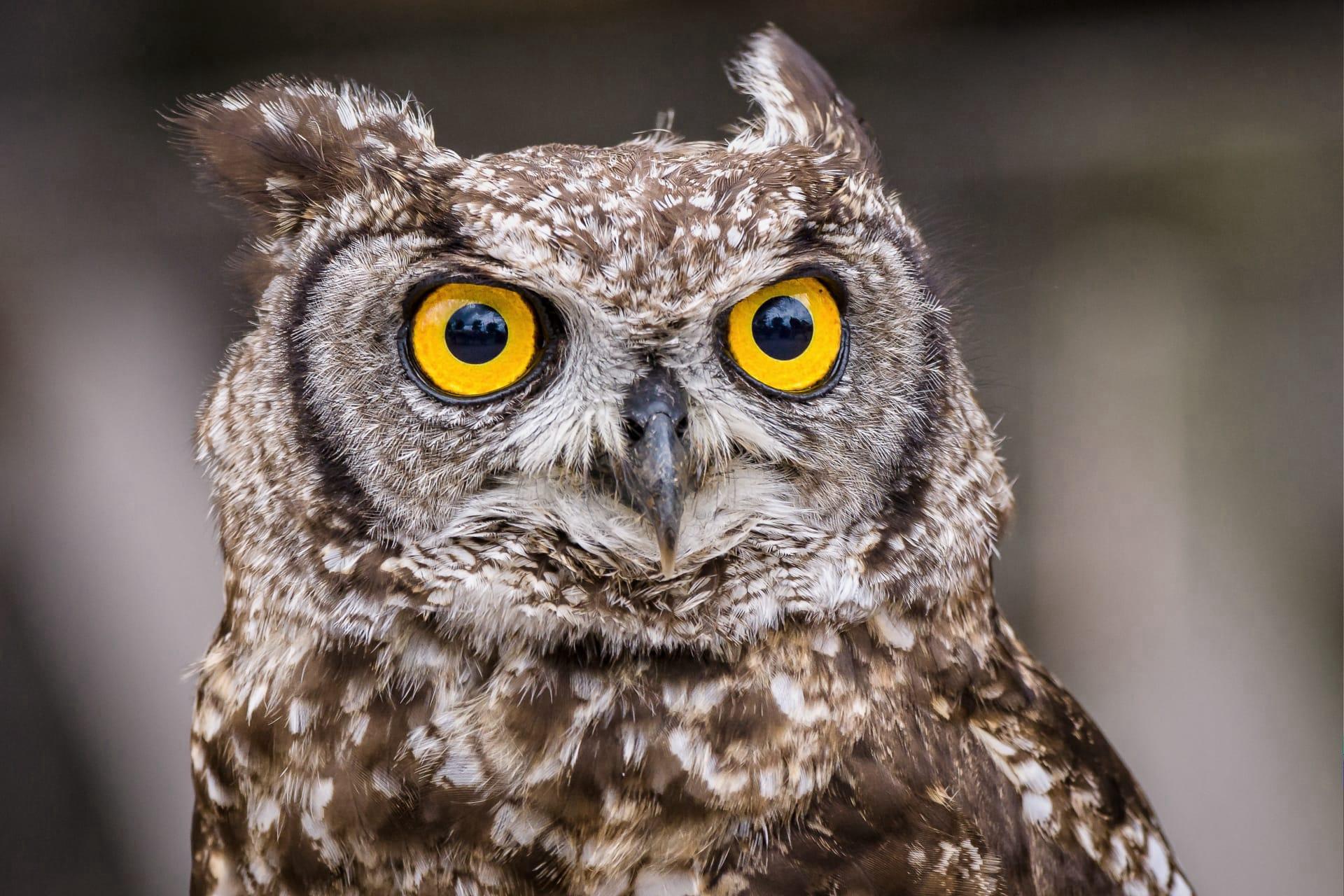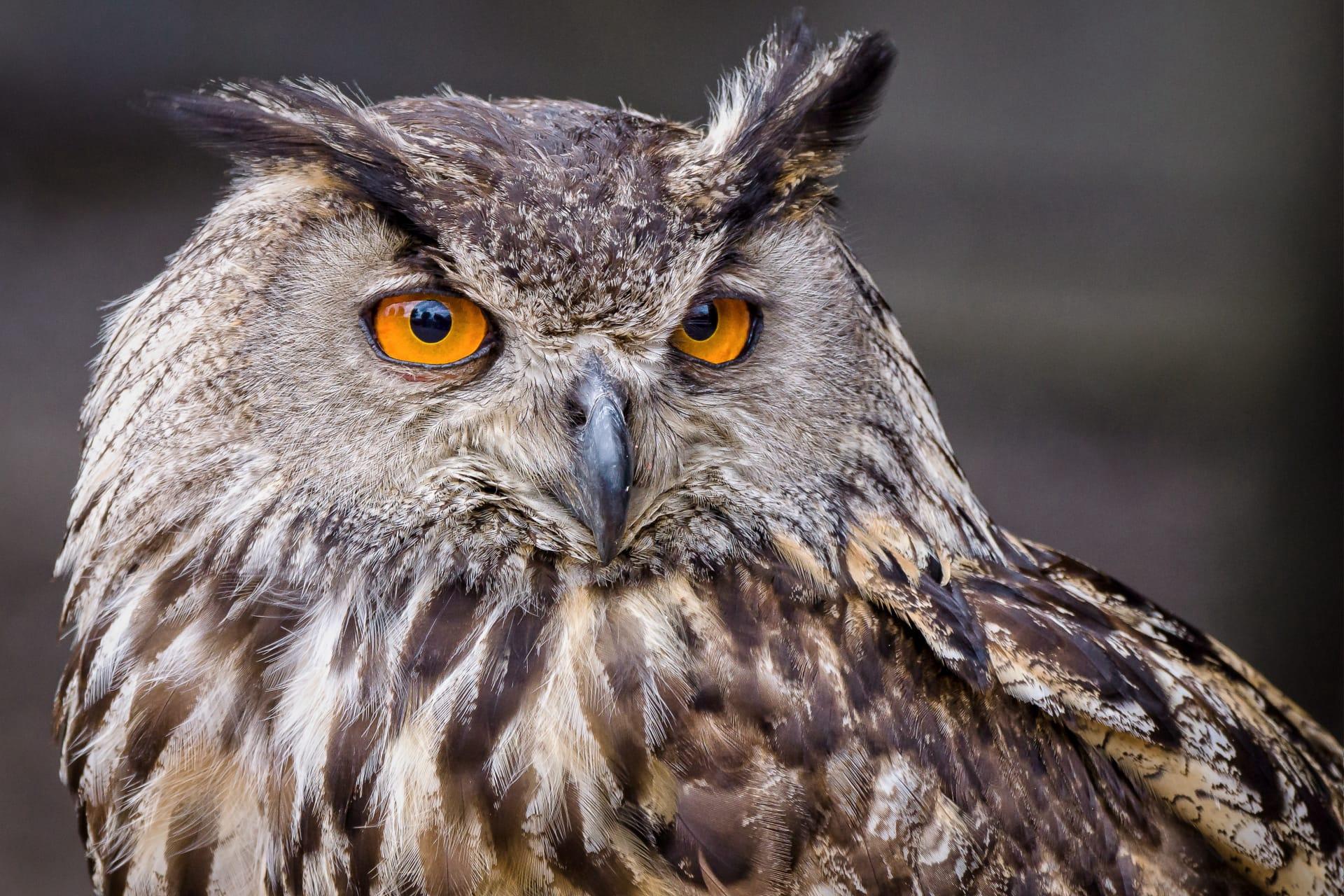Eagle Owl Trivia
- Home /
- Trivia Question /
- Animal /
- Eagle Owl Trivia
1
Question: How big can an Eagle Owl get, and what makes their size so remarkable?
Answer: The Eagle Owl is a real feathered giant, with a wingspan stretching up to 6 feet 2 inches (188 cm) and a body length of up to 30 inches (75 cm). What's particularly impressive is their weight, ranging from 3.3 to 6.6 pounds (1.5 to 3 kg), which makes them one of the heaviest owls. Their size isn't just for show; it aids in hunting larger prey and dominating their territory.
Question: What's unique about the eyesight of Eagle Owls, and how does it benefit them?
Answer: Eagle Owls possess exceptional night vision, allowing them to see prey at great distances even in low light. Their eyes are forward-facing, providing a wide field of binocular vision for accurate depth perception. This is crucial for hunting at night, as it enables them to accurately judge the distance and movement of their prey. Additionally, their large pupils and retinas capture more light, enhancing their ability to hunt in the dark.

2
Question: Do Eagle Owls hoot all year round, and what does their hooting signify?
Answer: Contrary to popular belief, Eagle Owls don't hoot throughout the year. Their hooting is most prominent during the breeding season, which is from late winter to early spring. The deep, resonant "ooh-hu" sound is a territorial call, mainly used by males to proclaim their presence to rivals and attract mates. Outside the breeding season, they're relatively silent, using softer hoots or screeches when necessary.
Question: Are Eagle Owls solitary creatures, or do they enjoy company?
Answer: There's a misconception that Eagle Owls are always solitary. In reality, they're solitary hunters but often form monogamous pairs. These pairs can be quite enduring, sometimes lasting for several breeding seasons. During breeding, they display strong territorial behavior, but outside of this period, they may tolerate the presence of other owls or birds in their territory, though they generally prefer solitude.

3
Question: What is the typical diet of an Eagle Owl, and how do they hunt?
Answer: Eagle Owls have a diverse diet, primarily consisting of small mammals like voles, rats, and rabbits. They're also known to hunt birds, reptiles, and even larger prey like young deer. Hunting is done mostly at night, using their keen vision and hearing to locate prey. They swoop down silently, thanks to their specially adapted feathers, and capture prey with their powerful talons.
Question: How long do Eagle Owls live, and what factors influence their lifespan?
Answer: In the wild, Eagle Owls can live up to 20 years, though some have been recorded to live longer in captivity, around 25 to 30 years. Their lifespan is influenced by several factors, including habitat conditions, availability of prey, and threats from human activities like habitat destruction and collisions with vehicles. Natural predators are rare due to their size, but younger owls are more vulnerable to predation.

4
Question: How do Eagle Owls communicate with each other, and what are some common sounds they make?
Answer: Besides the iconic hoot, Eagle Owls use a range of vocalizations for communication. These include barks, screeches, and whistles, each serving a different purpose. The bark is often a reaction to threats, while screeches and whistles are used during courtship or as a warning to intruders. Non-vocal communication includes body postures and wing clapping, the latter being a part of their courtship ritual.
Question: What role do Eagle Owls play in their ecosystem, and why are they important?
Answer: As apex predators, Eagle Owls play a crucial role in their ecosystems. They help control the population of rodents and other small mammals, maintaining a balance in the food chain. This predatory role also has a cascading effect, indirectly benefiting plant life by controlling herbivore populations. Their presence indicates a healthy ecosystem, and their conservation is vital for maintaining biodiversity.

5
Question: Where are Eagle Owls commonly found, and what are their habitat preferences?
Answer: Eagle Owls are widespread across Europe and Asia, with their habitat ranging from the Arctic tundras of Scandinavia to the warm Mediterranean regions. They prefer rocky landscapes, forests, and mountainous areas, often nesting on cliff ledges or in cave entrances. Adaptability is a key trait, as they can also be found in semi-urban areas, provided there's ample food supply and suitable nesting sites.
Question: How do Eagle Owls adapt to different seasons, particularly winter?
Answer: During winter, Eagle Owls adapt by adjusting their hunting patterns and prey selection. As some prey species hibernate or become scarce, they may shift to hunting birds or larger mammals. Their feathers provide excellent insulation against cold temperatures, and they're known to change roosting spots to sheltered areas to conserve heat. Their keen hunting skills and adaptability enable them to thrive even in harsh winter conditions.